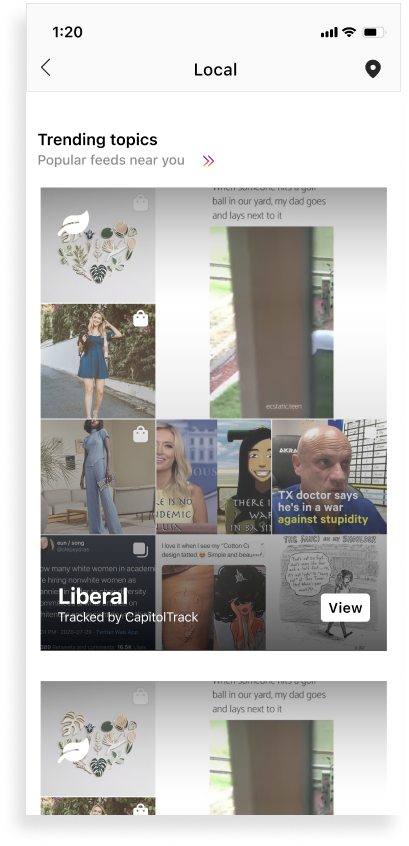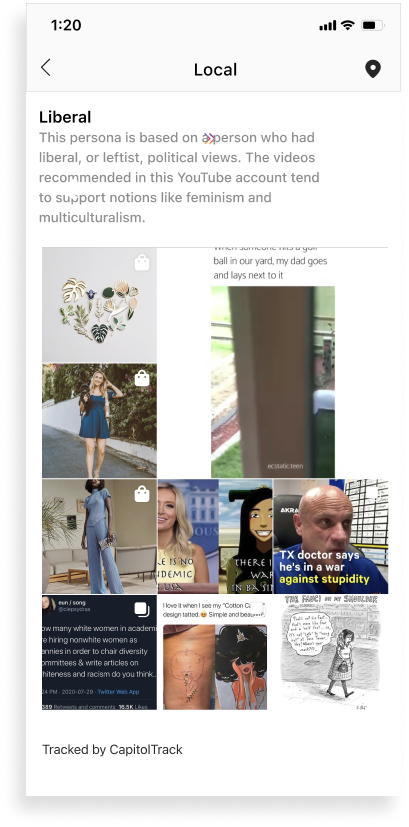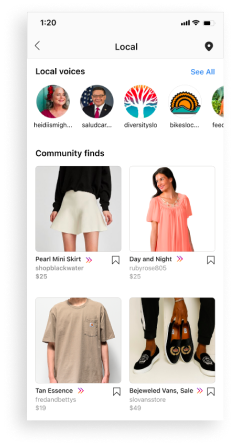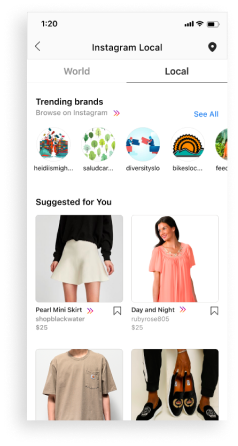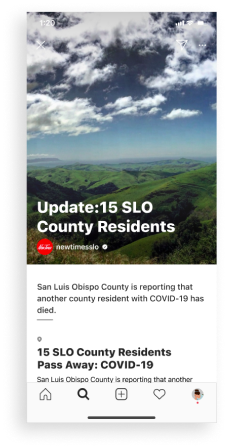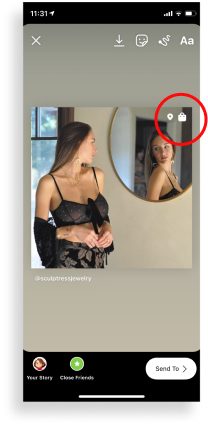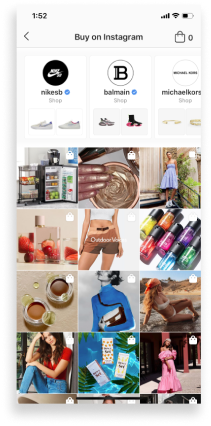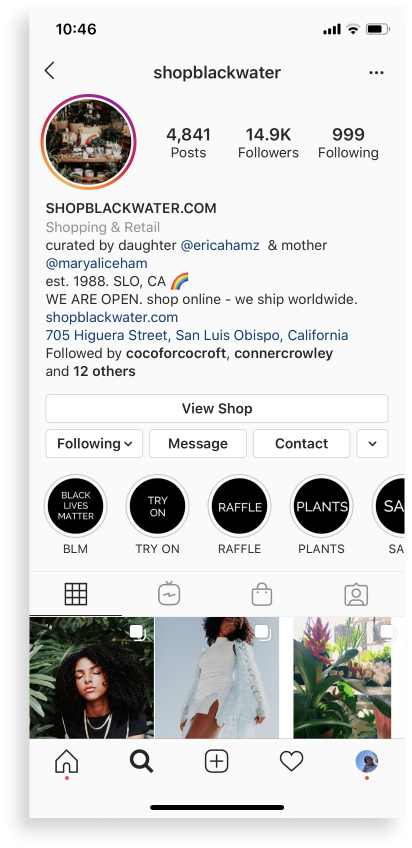INSTAGRAM Civil Engagement
Increasing transparency between citizens and their government and encouraging civil responsibility.
This feature was created under the guidance of the Applied 2020 organizers, buddies, and mentors! Applied allowed students like me to work on an industry-inspired Product Design project with mentorship from designers in industry and to later present our projects to designers working in these fields. Under recent political developments, I decided to work on a project that would inspire and increase government transparency in social media spaces and explored some features that would allow for this conversation.
Tools
Figma
Principle
Adobe XD
Role
Product Designer
UX Researcher
UI Designer
Duration
August 2020
4 weeks
Problem
Instagram users do not interact with any experiences that encourage political engagement.
And I’m talking about the constructive kind of political engagement, not the echo-chamber kind of engagement. I saw all too often on Instagram individuals who would promote their own ideas and beliefs on their platform, receive backlash from someone of a different background, and then both would get in an ALL CAPS feud in the comments section, only to block each other later and never speak again.
This project gave me the opportunity to do a deep-dive into these kinds of interactions and see what the options were for constructive discussions and dialogues that encouraged collaboration and understanding of values and ideas together, as opposed to interactions that limited this.
I really wanted to learn more about what current users thought about political engagement overall and what they thought social media’s role was in this engagement (if social media played a role at all.) I interviewed individuals from across the spectrum of media activism and proceeded to learn more about what they thought of the current political climate and their relationship with it. These were some of the questions that I grounded my initial research on!
What do you think about your current county or city government?
Do you think social media platforms should allow for engagement between citizens and their government?
Tell me about the most recent time you’ve engaged, at any level, with the representatives of your county.
What do you think about your current county or city government?
Tell me about your civic engagement habits over social media.
Meet the Customers
Interviews
My three separate ~10 minute interviews were with my selected group of customers all with varied relationships with social media and social media engagement overall. It was important to this project to gain a deeper understanding of what kinds of things people considered and engaged with with regards to political activism and how the current interactions were being enhanced to allow for a deeper level of political engagement.
Findings
From my initial customer research, I learned that users thought social media wasn’t the best place for social engagement in a meaningful way. More direct quotes from my customers that led me to come to this conclusion include:
Social media is a “black hole”
Everyone sees “the same stuff depending on what they already like”
“Not a direct way to help solve problems”
Social media companies should “allow us to see what our representatives stand for”
“Everyone thinks about you in a specific way based off what you post or don’t post, which leads people to believe that it’s directly representative of what you care or don’t care about.”
This research guided my initial ideations and allowed me to understand what this feature needed to include in order for it to provide meaningful engagement. It required something that could allow for sharing, did not have an option for commenting, showed what causes your representatives were supporting, and wasn’t biased.
Take away:
Ideation.1
Using the algorithms that contribute to feeds to provide a peek into other users feeds. Previews of “popular feeds” showcase a certain set of ideologies so users can see different perspectives if they choose.
This first ideation was abandoned because it:
Didn’t address all aspects of my problem statement
Only a direction that was concerned with the system itself, not the experience
Something that I personally was really curious about. It’s super interesting to me to reflect on what people might be looking at on a day to day basis that then might contribute to their interactions with other people from different recommendation bubbles.
Ideation.2
The creation of a “Local” explore tab that highlights and showcases local products and services, local news sources, and recent bills relevant to the area. These would be pulled from users zip codes and popular services already using social media.
I didn’t end up going with this second ideation because it:
Wasn’t necessarily the feature that would allow for the civic engagement I was concerned about
The direction would probably disrupt the existing system
Only accounted for local matters but also didn’t ensure a greater impact on local products and businesses
Would give local companies and businesses a competitive edge but most likely would not ensure or allow for constructive dialogues between people most likely in the same local areas
Ideation.3
The ability to add a “shopping bag” tag on stories, which would also translate to seeing this tag on other user stories. This would also allow users to easily share different local products and brands.
This third ideation was abandoned because it:
Exaggerated the possibilities of the “shopping” product feature
Would connect users to brands and services but not inspire conversation about politics surrounding these brands
The transient nature of stories only encourages this issue to become a fleeting notion as opposed to a necessary cause
From these ideations, I decided that the solution should feature a novel experience, not just a new information architecture, and that it should be primarily focused on the political aspect of Instagram. I also wanted to go off of something that was already created using this political mindset, because this would work and exist better with the preexisting system.
Low-fidelity
At the low-fidelity wireframe stage, my primary focus was on feature navigation, information architecture, and mapping the concept at a high level.
Process
After several rounds of critique on the ideations, I reevaluated the directions and decided to go in a different direction completely, using Facebook’s own political ventures as a starting point. This direction included the Voting Information Center on Instagram and expanding upon the possibilities of sharing this information. This image is included here to reference this feature and is credited to Facebook.
It was important to feature bills and information from these ballots to provide information necessary to vote.
Going off of this new direction, I proceeded to ideate and conceptualize what it would look like if users were able to view and see aspects of political spaces that weren’t already included in Instagram’s features. It was important to feature bills and information from these ballots that are often passed over or disregarded, given they provide information necessary to vote.
The image below is a screenshot of some of my process! Some aspects of the ballots that I was considering was the content of the ballot itself and what this visualization would look like
Iterations
These different directions are pulled from my experimentation spanning ways to represent the information I was conveying. It was necessary to include what issues the bill itself was addressing and to make sure that these still looked approachable from a screen.
Final Prototype
Reflection
I’m super proud of this project because I explored a problem space that I’m really passionate about! I saw a need for political transparency in my daily interactions with users and social media and was committed to seeing what solutions could be designed to address this lack of transparency. Moreover, I wish I would have been able to hone down the focus of this product feature at the start of the program, so I would’ve been able to get feedback on my designs throughout the iteration process and spend more time on it!
If I was doing this project again, I would’ve wanted to talk to a Facebooker initially to understand the full scope of the problem and then work with ideations from there. There is much more I would’ve liked to address considering the current political climate, but there is ample room for creation with regards to these climates.
“This is a big issue space in social media in general and I think you’ve done a tremendous job doing your due diligence and identifying potential solutions in this area. Great work!”
— Current Product Designer @ Facebook













